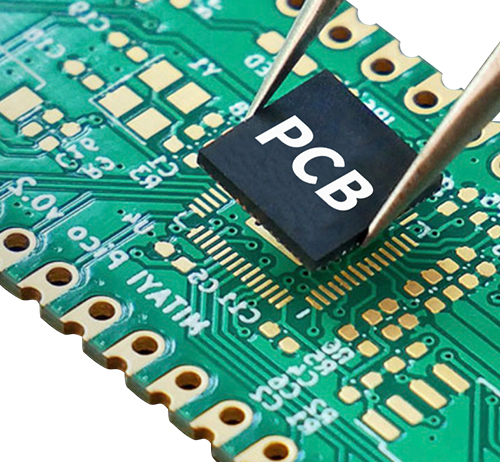Time:2022-07-05 Visit:
Many customers believe that after the circuit board is broken, the temperature and pressure of the film should be increased to enhance its bonding force. In fact, this view is not correct, because the solvent of the resist layer is excessively volatilized after the temperature and pressure are too high. To make the dry film brittle and thin, it is easy to be broken during development. We must always maintain the toughness of the dry film. Therefore, after the hole is broken, we can improve it from the following points:

1. Reduce the temperature and pressure of the film
2. Improve drilling drape
3. Increase exposure energy
4. Reduce the development pressure
5. The parking time after sticking the film should not be too long, so as not to cause the semi-fluid film at the corner to diffuse and thin under the action of pressure.
6. Do not stretch the dry film too tightly during the filming process
Reasons for seepage of PCB dry film
The reason for the infiltration plating indicates that the dry film and the copper clad laminate are not firmly bonded, which makes the plating solution penetrate deeper, resulting in the thickening of the "negative phase" part of the plating layer. The infiltration plating of most PCB manufacturers is caused by the following points:
1. High or low exposure energy
Under the irradiation of ultraviolet light, the photoinitiator that absorbs the light energy is decomposed into free radicals to initiate the photopolymerization reaction of the monomer, and the body-shaped molecule that is insoluble in the solution of dilute alkali is formed. When the exposure is insufficient, due to the incomplete polymerization, the film swells and softens during the development process, resulting in unclear lines or even the film layer falling off, resulting in poor bonding between the film and copper; if the exposure is excessive, it will cause development difficulties, and also in the electroplating process. Lifting and peeling occurred during the process, resulting in infiltration plating. So it is very important to control the exposure energy.
2. The film temperature is too high or too low
If the lamination temperature is too low, because the resist film cannot be fully softened and properly flowed, the bonding force between the dry film and the surface of the copper-clad laminate will be poor; if the temperature is too high, the solvent and other volatile substances in the resist will The rapid volatilization of the substance produces air bubbles, and the dry film becomes brittle, causing warping and peeling during electroplating and electric shock, resulting in bleed plating.
3. The film pressure is high or low
When the film pressure is too low, it may cause uneven film surface or a gap between the dry film and the copper plate, so that the bonding force cannot be achieved; if the film pressure is too high, the solvent and volatile components of the resist layer will evaporate too much, resulting in The dry film becomes brittle and will lift and peel off after electroplating electric shock.